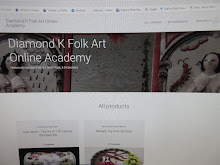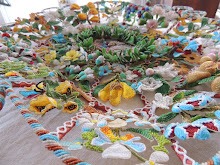A Child's Bodice c1840....
 We are so very fortunate and indebted to the early photographers to have little windows into the mid 19th century, but even still.....it is hard for one to imagine how absolutely beautiful the colours must have been. There were definitely unique pallets of colour, changing and evolving as the dyers developed new colors in their dye baths. From the above late 1840's daguerreotype, it is obvious the girl's dress is pretty.........but I imagine it was stunning in colour.
We are so very fortunate and indebted to the early photographers to have little windows into the mid 19th century, but even still.....it is hard for one to imagine how absolutely beautiful the colours must have been. There were definitely unique pallets of colour, changing and evolving as the dyers developed new colors in their dye baths. From the above late 1840's daguerreotype, it is obvious the girl's dress is pretty.........but I imagine it was stunning in colour.
 My little Pip is modeling a c1840 child's bodice for you today~ I have a general rule to not keep bodices that have been unpicked from their skirting, but this one was too rich in pattern and colour to ignore. Basting stitches are evident at the bottom of the waistband. Both wear to the folds of the fan front, and slight stains on the interior lining are evidence that it was indeed worn as a dress by a child~ either girl or boy at this age(2-3 yr). Pippin will be 3 yr in Sept, and it fits her perfect.
My little Pip is modeling a c1840 child's bodice for you today~ I have a general rule to not keep bodices that have been unpicked from their skirting, but this one was too rich in pattern and colour to ignore. Basting stitches are evident at the bottom of the waistband. Both wear to the folds of the fan front, and slight stains on the interior lining are evidence that it was indeed worn as a dress by a child~ either girl or boy at this age(2-3 yr). Pippin will be 3 yr in Sept, and it fits her perfect.
 The back closure is hand made button holes & little brass buttons. One is absent on the waistband. All seams are piped. The fabric is a beautiful block printed wool blend challis~ medium weight and slightly scratchy. The texture of early textiles must be experienced in person, as there is nothing to describe the unique hand of them in words
The back closure is hand made button holes & little brass buttons. One is absent on the waistband. All seams are piped. The fabric is a beautiful block printed wool blend challis~ medium weight and slightly scratchy. The texture of early textiles must be experienced in person, as there is nothing to describe the unique hand of them in words

I date this bodice to 1840 mainly from the sleeve construction and fabric design. The middle of the 1830's saw HUGE gigot sleeves at their largest ever, from about 1836, they started deflating~ first the huge puffs were banded and tucked at the shoulders pushing the 'puff' down lower on the arm. Eventually the puff disappeared all together, and in most of the 1840's, sleeves were very high up under the armpits, and nearly skin tight. The little short sleeves on this bodice are gathered and pleated at their tops in late 1830's fashion, the little ruffles having mint trim of mint green wool braid. This type of braid was very popular for trim on children's clothes during the 1840-70 time period.
Having this little bodice just makes my mind race as to what the skirting was unpicked and made into.....a lady's pocket? Mending or for patchwork, maybe. Perhaps a little dolly's dress? In my perfect world, it is lying neatly folded in an attic trunk, waiting for me to find it and give it back to its bodice..................


























3 comments:
Thank you, Rachael for your wonderful knowledge on sewing and early clothing. Piped seams? That sounds very nice in that they simply would not split open very easily.
Pip, as ever, is darling with her sweet Botticelli smile.
Christine
I worked for many years in a 1856 museum. It has been in the same family since 1820 but was restored to that dat as that is when the railways began to bring such items as cotton fabrics from the United States.
I am delighted to come across a fellow appreciator of costuming and the details of the past, and the do's and don'ts of the times.
I was fortunate enough to be allowed to bring my 3 yr old to work with me in costume and I noticed the transformation of the matter of factness of the things he had to wear. Costume, even the way seams are set can change your posture.
So my little gur wore his dress and petticoat with price just as my granfather did in 1893.
Thanks for your blog.
The only thing that drives me crazy is the idea of gathering. They did not do it. The gauged all the work like waist bands. This made it easier to expand or shrink and ther is never any bunching. Bodices and skirts can be let in and out ( or up and down) with ease , Just as the folds horizontaly above the hem meant that the dress could be lengthen and hemmed with ease as well as shortened without putting sissors near cloth,and the cloth lasts longer. They were frugal and smart and we cold learn a great deal from them.
yours, Janet
So beautiful! I love all the children's clothing you post here and it is so nice to see them on your charming little models, it really makes history come alive to see how they were actually used, so lovely!
Post a Comment